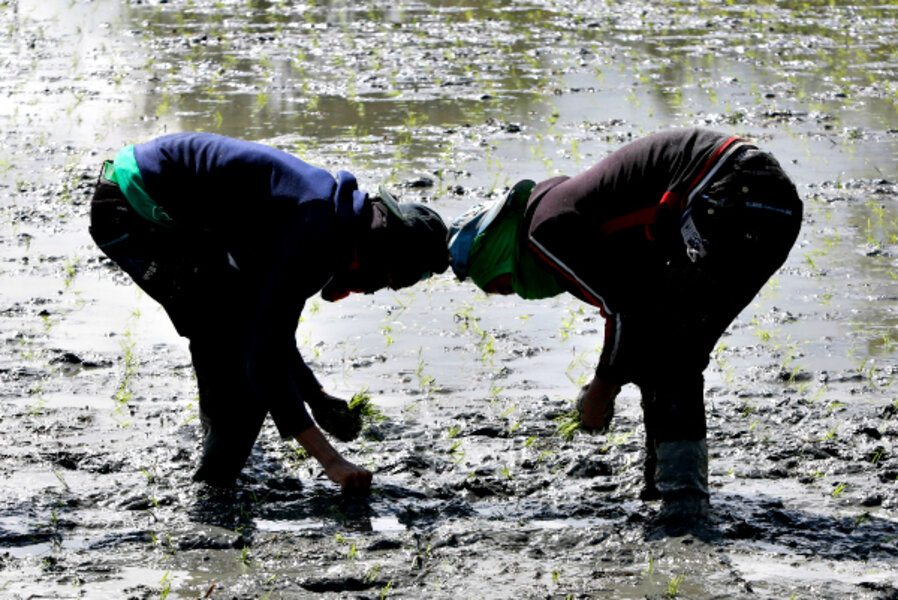A rice revolution?
Loading...
Rice is the most important grain in terms of human consumption, according to numerous sources, including the International Rice Research Institute and the UN Food and Agriculture Organization (FAO). Globally, rice provides 20 percent of all calories consumed as food, and up to 70 percent in some regions. A 2010 Oxfam report also states that rice cultivation is the “single largest source of employment and income for rural people.”
Rice remains a crop that is grown predominantly on smallholder farms around the world, with the majority of rice farms smaller than two hectares (five acres) and an average global yield of approximately four tons/hectare. A major transition to hybridized seeds, agrochemical fertilizers, and pesticides took place in many areas during the so-called Green Revolution between 1940-1970, improving rice quality and yields over some earlier traditional cultivation methods.
But while rice production has remained level over the past decades, rice demand has steadily expanded with growing populations.
With temperatures rising around the globe, and at least one recent study by a team of scientists led by Jarrod R. Welch showing that rice fields in Asia are sensitive to increasing temperatures and decreasing solar radiation, it’s more important than ever to find methods that maintain or further improve rice crop yields.
One method that has been gaining notice is System of Rice Intensification (SRI), an approach developed by Fr. Henri de Laulanié in Madagascar beginning in 1983.
There has been evidence that SRI has produced yields double the world average. A smallholder farmer in northern India, Sumat Kumar, used SRI to produce 22.4 tons of rice from a single hectare in 2012, breaking the world record.
SRI differs from other modern, conventional crop management techniques in that it does not focus on the specialized seeds, fertilizers, and chemical inputs, all of which can represent high costs for smallholder farmers with limited amounts of acreage.
Rather, SRI is a crop-management approach that can be adjusted to local conditions and requirements based on its four interacting principles: Early, quick and healthy plant establishment; reduced plant density; improved soil conditions through enrichment with organic matter; and reduced and controlled water application.
These principles form the basis of SRI practices, which can be adapted to local conditions such as water availability, soil conditions, weather, labor availability, and access to seeds. Using SRI does not require growers to convert to fully organic agriculture, although it can be accommodated to organic growing.
Typical SRI practices include early transplantation of seedlings into paddies, wider plant spacing, single planting as opposed to the conventional planting of three to six seedlings in a clump, an avoidance of continuous soil flooding, and early, frequent weed control.
According to the nonprofit SRI International Network and Resources Center, the goal is to create nutrient-rich soil and provide individual plants with the space to grow, allowing them to develop a stronger root system, which leads to stronger plants and overall larger yields. And according to Oxfam, “growing more rice with less water and agrochemical inputs is essential for future food security and environmental sustainability.” SRI methods have been used in 40 countries, and the overall results are impressive:
- 47 percent increase in yields.
- 40 percent reduction in water use.
- 23 percent reduction in costs.
- 68 percent increase in household incomes.
The principles and practices of SRI have been applied with success to other crops as well, according to SRI and Oxfam. These include wheat, sugarcane, finger millet, teff, and legumes. When used with other crops, the method is known as the System for Crop Intensification.
• This article originally appeared at Food Tank, a think tank focused on feeding the world better. Food Tank researches and highlights environmentally, socially, and economically sustainable ways of alleviating hunger, obesity, and poverty and creates networks of people, organizations, and content to push for food system change.





